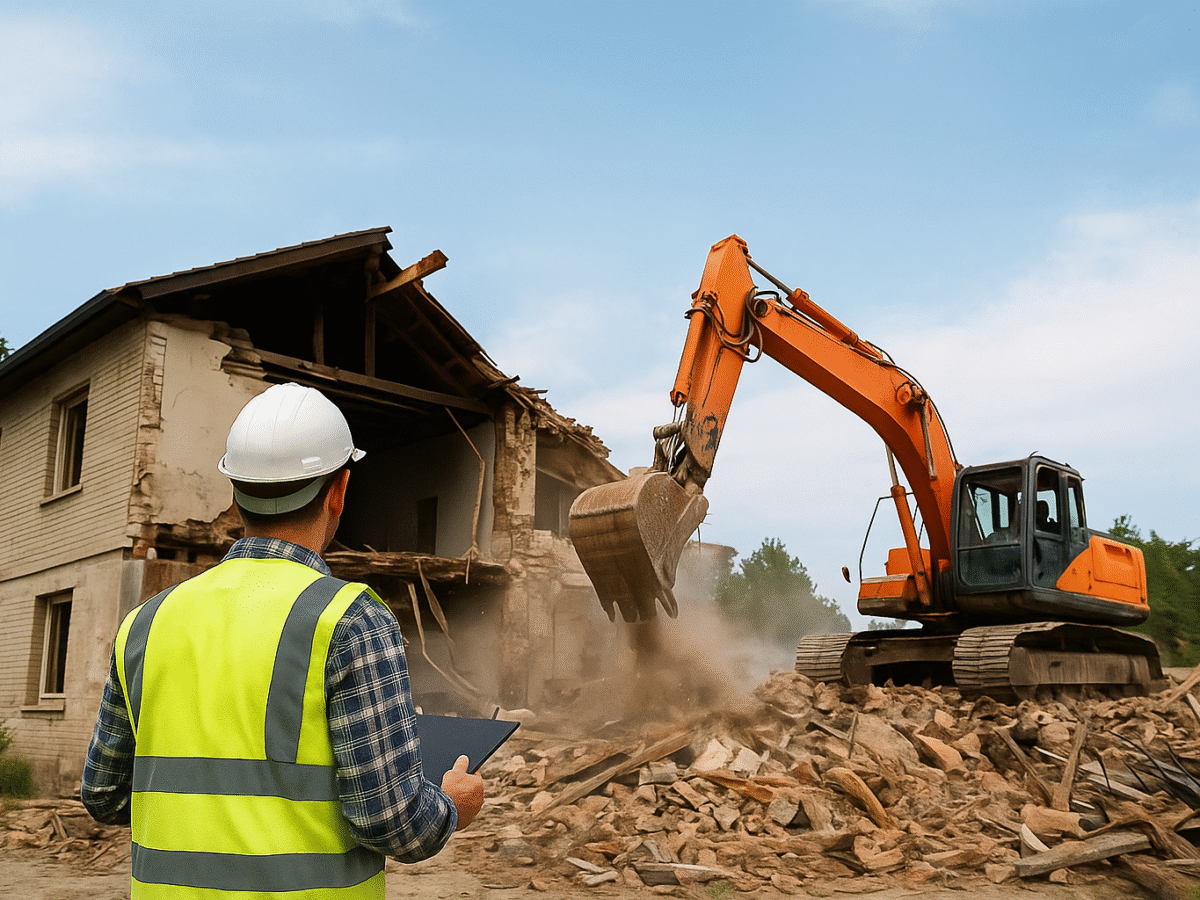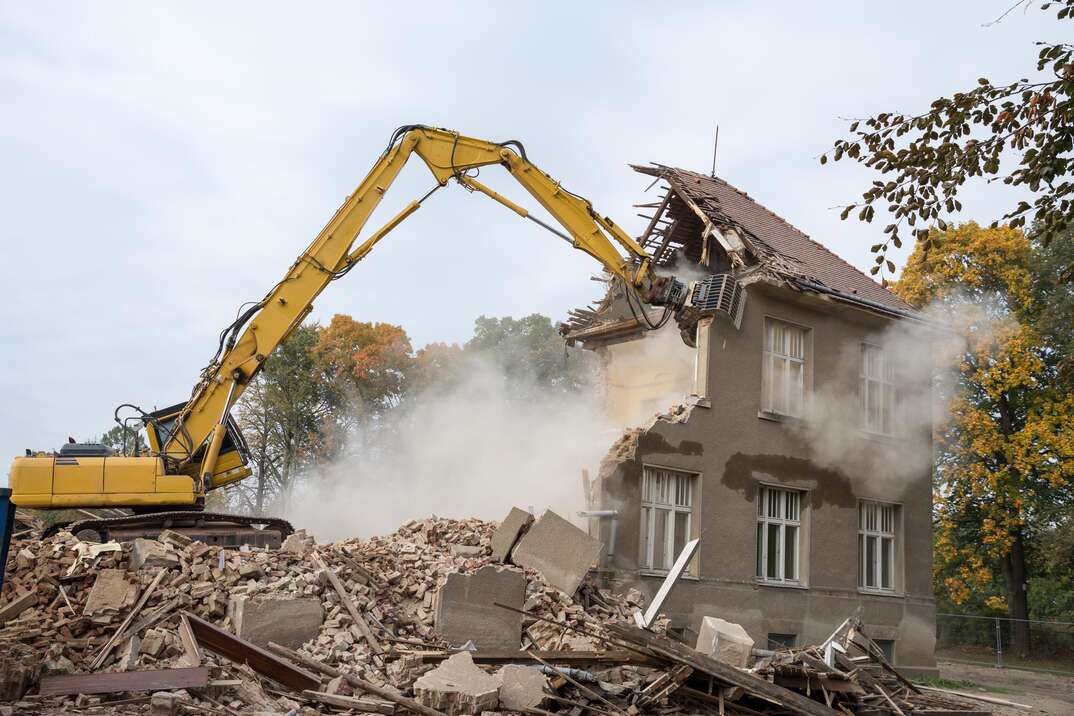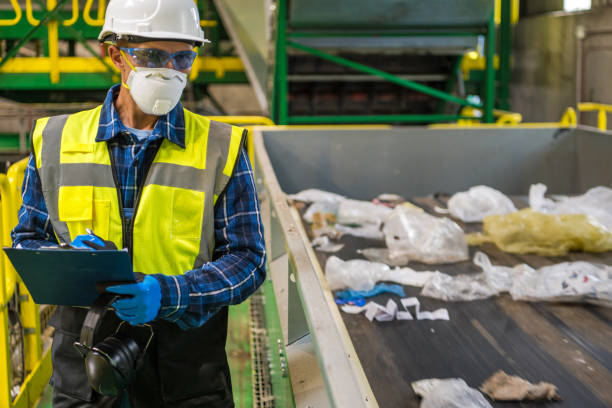Embarking on a renovation project can be exciting, but before tearing down walls or removing old structures, preparing your property for safe demolition is crucial. Proper preparation safeguards your investment, protects the health and safety of everyone involved, and ensures the project runs efficiently. Skipping safe demolition preparation can lead to hidden hazards, accidents, legal issues, environmental harm, and costly delays..
In this guide, we’ll walk you through the essential steps of safe demolition preparation, from identifying hazards to permits, site security, and waste management.
1. Conduct a Hazardous Materials Assessment
Before any demolition begins, it’s important to identify and manage hazardous materials such as asbestos, lead paint, and mold. These materials can pose serious health risks if not handled properly.
Why Hazardous Materials Assessment Matters in Demolition:
- Asbestos: Commonly found in older insulation, flooring, and ceiling tiles. Exposure can cause lung disease and cancer. So, it is very crucial to conduct abestos testing before any demolition.
- Lead Paint: Often present in homes built before 1978. Ingesting or inhaling lead dust is dangerous, especially for children.
- Mold: Can grow behind walls or under floors, causing respiratory issues and allergic reactions. Stopping moisture is crucial to prevent mold from coming back.
- PCBs (Polychlorinated Biphenyls): Found in old electrical equipment, fluorescent light ballasts, and caulking.
- Silica Dust: Released when cutting or breaking concrete, tile, or masonry. Can cause silicosis.
- Radon: May be trapped in basements or foundations of older buildings.
In British Columbia, regulations such as WorkSafeBC’s Occupational Health and Safety guidelines require a hazardous materials survey before any demolition work begins. This survey identifies asbestos, lead, mold, and other dangerous substances. Failing to comply can lead to hefty fines, liability issues, or even stop-work orders. Beyond legal consequences, it ensures that waste is handled properly and that both workers and the public remain safe.
Consider a homeowner renovating a 1970s property. During the hazardous materials assessment, asbestos was discovered in vinyl floor tiles and lead paint on window frames. Because it was identified early, a licensed abatement team safely removed the materials, preventing health risks and avoiding unexpected delays. Without the assessment, the project could have faced costly interruptions and serious safety concerns.
DIY Tips for Identifying Hazardous Materials Before Demolition: While you should never remove asbestos or lead paint yourself without certification, you can start by identifying likely areas where these materials may be present and documenting them for professionals.
Pro Tip in Asbestos Testing for Safe Demolition Preparation: Testing early in the planning process avoids delays and unexpected safety issues once demolition begins.
2. Obtain Necessary Permits
Depending on your location and the scope of demolition, various permits may be required. Municipal regulations often govern what can be demolished, how waste should be handled, and whether environmental protections are needed.
Why Demolition Permits and Approvals Are Important:
- Prevents legal fines or stop-work orders.
- Ensures proper environmental compliance.
- Protects workers and neighbours from unsafe conditions.
Pro Tip: Even minor interior demolition may require permits. Check local regulations before starting any project.
3. Secure the Demolition Site for Worker and Community Safety
Safety is paramount during demolition. Site security is a vital part of safe demolition preparation to protect workers, visitors, and the surrounding community.
Key Steps to Secure a Demolition Site for Safety:
- Fencing: Install sturdy barriers to prevent unauthorized entry.
- Signage: Display safety symbols or clear warning signs about hazards and restricted areas.
- Controlled Access: Only allow trained personnel on-site.
- Protective Measures: Ensure workers wear appropriate personal protective equipment (PPE) such as helmets, gloves, eye protection, and respirators.
Pro Tip: Always plan an emergency access route in case of accidents, and keep fire extinguishers and first-aid kits on-site.
4. Plan for Waste Management and Recycling
Demolition generates large amounts of waste, including wood, concrete, metals, and hazardous materials. Effective waste management is an important step in safe demolition preparation, helping ensure proper disposal, reducing environmental impact, and lowering costs.
Why Waste Management and Recycling Are Critical in Demolition:
- Reduces landfill waste and promotes sustainability.
- Prevents contamination from hazardous substances.
- Complies with municipal waste disposal regulations.
Pro Tip: Identify local recycling centres or waste management partners in advance to streamline disposal and avoid project delays.
5. Notify Neighbours and the Community
Communication with neighbours and the surrounding community is often overlooked but extremely important, as lack of proper updates can lead to unnecessary demolition mistakes. Noise, dust, and disruptions from demolition may otherwise affect nearby properties.
Steps to Notify Neighbours and Avoid Demolition Mistakes:
- Notify neighbours well in advance about the timeline and scope of demolition.
- Share information about expected noise levels, dust mitigation measures, and working hours.
- Provide a contact person for any concerns during the project.
Pro Tip: Consider posting updates on community boards or online groups to keep residents informed throughout the project.
6. Additional Safety Considerations
While hazardous material assessments, permits, site security, waste management, and community notifications are essential, there are other factors to consider:
- Structural Integrity: Ensure walls, floors, and ceilings are evaluated by engineers before demolition to prevent accidental collapses.
- Utility Disconnections: Shut off electricity, gas, and water before starting to reduce the risk of fire, flooding, or electrocution.
- Emergency Planning: Emergency planning is a crucial element of safe demolition preparation, ensuring evacuation routes, first-aid protocols, and emergency contacts are in place.
Pro Tip: A thorough pre-demolition checklist, similar to those recommended in a demolition methods best practices guide, saves time and reduces costly mistakes.
Conclusion
Safe demolition preparation is a multi-step process requiring careful planning, professional expertise, and attention to detail. By assessing hazardous materials such as asbestos, obtaining permits, securing the site, planning waste management, and communicating with the community, you reduce risks, stay compliant with regulations, and set your renovation project up for success. Choosing a company experienced in asbestos removal ensures that hidden hazards are handled safely and efficiently before demolition begins.
Partnering with a trusted demolition company like BC Green Demolition specialists in asbestos removal Vancouver projects guarantees your safe demolition preparation starts on the right foot, with safety and compliance as top priorities.
Ready to start your renovation journey? Contact BC Green Demolition today to schedule a consultation and benefit from professional demolition and asbestos removal services tailored to your needs.



